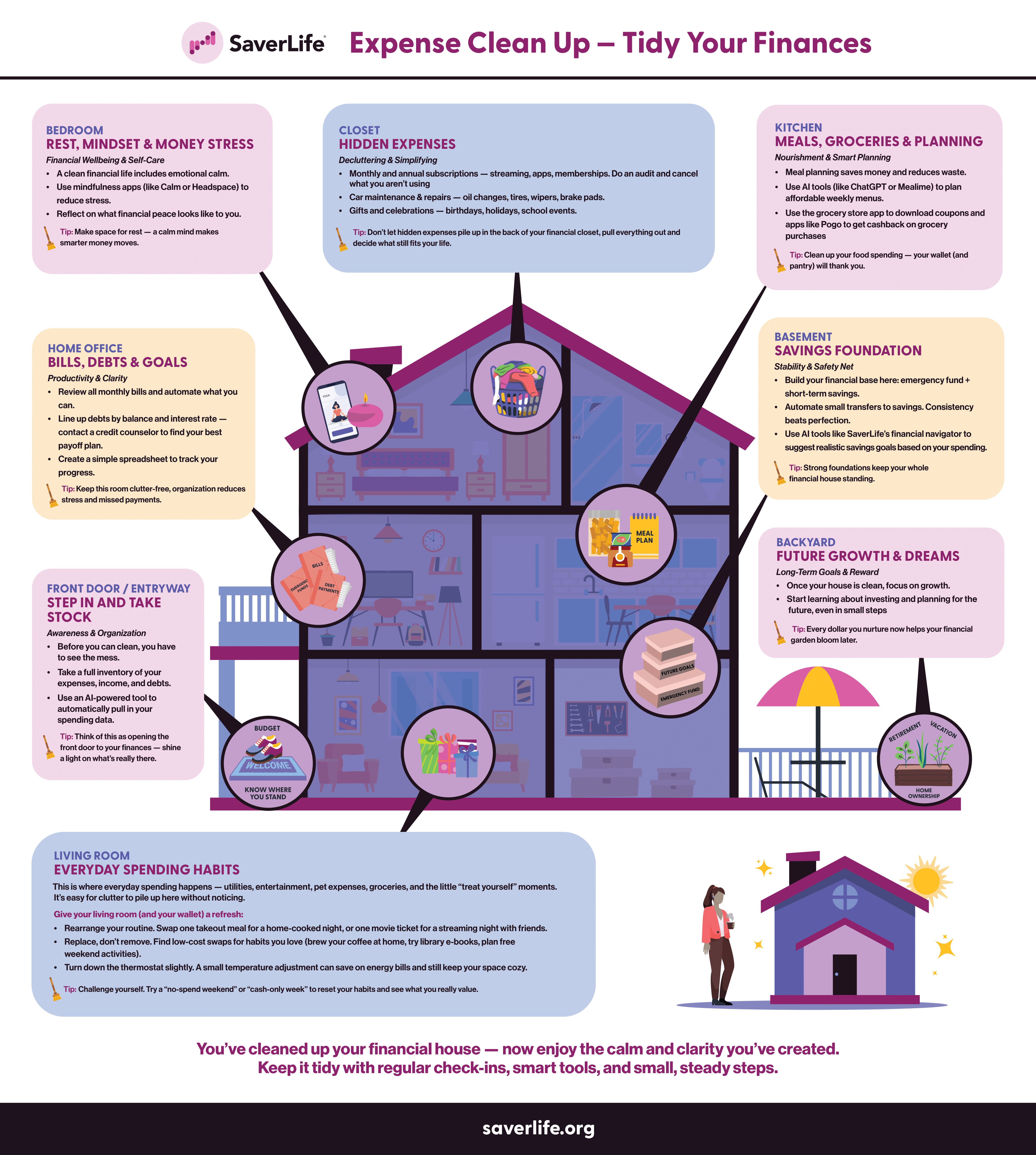Incremental Budgeting vs. Zero-Based Budgeting: Which Works Better For Your Household?

With the consumer price index higher than ever before, you’ve likely considered how you can benefit from a budget.
When you first start budgeting, it can be confusing and ambiguous. There’s many resources out there, but they usually say the same thing: plan your paychecks, reduce your spending, save your money for the future. Once you have the basics down, though, how do you improve your budget?
There are tons of different methods for budgeting out there, even though the basic principles are the same for all of them.
However, incorporating a budget that fits into your lifestyle can make all the difference, especially when it comes to the details. If you’re looking for the right budget, you may want to try incremental budgeting or zero-based budgeting.
In this article, we’ll tell you what each is, who it’s best for, and how to stick to any budget you start!
Isn’t all budgeting the same?
Nope! Sure, budgeting as a concept is pretty general, but there are tons of different methods to suit everyone’s lifestyle. These methods can be changed even more to adapt to your specific circumstances. The more you take the time to try out different kinds of budgeting, the more likely you’ll be able to create a plan toward your financial goals based on your capabilities!
We’re going to talk about two different methods of long-term budgeting: incremental budgeting and zero-based budgeting. Businesses use these budgeting methods, and you can in your household, too!
Incremental budgeting
Incremental budgeting is based on the idea that you can improve on an earlier budget you created with small adjustments based on your current needs.
Businesses often use this method of budgeting in their fiscal planning. Basically, you take a previous year’s budget, make adjustments based on your actual spending, then allocate more funds to certain categories as needed.
How this works in personal budgeting is very much the same. Start by taking the previous month’s expenses as estimated expenses. Then, add or subtract increments in different areas as you need. Maybe you know you’ll be driving more during the month, so you take a little out of your public transit budget and put it toward gas.
Rather than keeping things static or starting from the ground-up, you adjust your budget based on what you already know.
This is best for those who get paid fixed amounts and have an established budget they’re working with. It also takes a good deal of forecasting, meaning you’ll need to know many of the purchases you’ll need to allocate resources to. The more you adjust your incremental budget, though, the better it becomes.
Zero-based budgeting
The next method is zero-based budgeting. As the name implies, this is a method where you budget every last dollar until you’re left with zero.
Every month, you allocate your money to expenses, savings, and debt payments. It’s the same as the envelope method of budgeting, where you split up your money into different categories. It’s easy to customize to your monthly needs.
To start a zero-based budget, write down your monthly income. Let’s say you make $3,000 a month. Then, set aside money for things like rent, groceries, bills, gas, and other expenses. You should have money left over from that, which you can put towards debt payments and savings! Maybe you put some toward a travel or emergency fund, it just needs to go somewhere.
This approach to budgeting is best for those who have a good idea about their monthly spending averages.
Before you jump into a zero-based budget, you should have a few months of budgeting experience under your belt. You can track your expenses on your own or with a budgeting app.
Which is for you?
It’s up to you to decide which is better for your household. Incremental budgeting and zero-based budgeting are both methods of planning out your money over a fixed period of time. Each has its own unique benefits and drawbacks, so weigh out the pros and cons of each.
A big advantage of incremental budgeting is its ease of use. It uses your current budget to save time on building one from the ground up. Because your fixed expenses are consistent, there’s no need to change those amounts at all. It’s simple to adjust spending categories, especially if you’re comparing month to month.
However, incremental budgeting comes with a few drawbacks. You have less flexibility in the amounts allocated to certain spend categories, which can lead to certain categories being unnecessarily high based on current circumstances. Lastly, it’ll be almost impossible to have an incremental budget if you work with an unpredictable income.
Zero-based budgeting is great because it keeps you more aware of your finances. You’re going to have a much easier time adapting to life and not spending what you don’t have. It gives you more control and more practice in forecasting your finances. Zero-based budgets also keep you much more accountable, sitting you down to predict and plan how you’ll spend your money.
Zero-based budgets, though, require dedicated maintenance. You basically need to rework your budget every period from the ground up. Also, variable expenses are tricky to predict, and it can be a headache to find the room to fit in an unexpected expense when you have your money completely planned.
Tips for sticking to a budget
Track expenses
No matter the budget you choose, you’ll need to put in the work to stick to it. That starts with tracking all your expenses. Budgeting involves a lot of guesswork and prediction. You want to make your budget as accurate as possible so you can approach every month more confidently. Tracking expenses and getting a pulse on your spending habits eliminates a lot of guesswork!
Expense tracking takes a little work. You’re responsible for recording every purchase you make, and you’ll need to pay attention when you’re spending more than you have. This, however, is the best habit to build for your finances. If you’re having trouble recording easily while you’re out, there are plenty of mobile expense trackers available. You can also refer to your bank statements, too.
The results speak for themselves. Every time you write down a purchase, you’re giving yourself a better picture of your spending. You’ll know exactly what you spend and where you spend it, making it easy to adjust and reduce your spending.
Be consistent
We’re always told that if we want to form a habit, like exercising or quitting smoking, we need to be consistent. The same is true for budgeting, so make sure that you’re not cheating yourself. Practice makes perfect, and you’re building a strong foundation when you practice these skills each day.
Every time you swipe your card, make sure to record it in your expense tracker. Set aside a day and time each week when you’ll go through your budget and see how things are going. Also, your spending isn’t the only thing you want to be consistent. When you save a consistent amount of money each month, you’ll be hitting those saving milestones in no time.
Need the right motivation to be consistent with your finances? Try out SaverLife! Just connect the app with your bank account. Each time you save money for yourself, you’ll get points toward rewards! How’s that for a little motivation?
Make sure everyone is on the same page
Many budgets fall through the cracks because an individual has a hard time holding themselves accountable. Luckily, if you’re budgeting for your household, you’re not alone. You may be responsible for finances in your house, but that doesn’t mean it can’t be a collaborative effort.
Your household should be aware of your budgeting plans so they can follow the same spending practices. Create a common goal to keep everyone motivated and excited. When someone has support and encouragement in their savings journey, it’s much easier to stay motivated!
Regardless of how you save, SaverLife rewards you for what you put away
Incremental budgeting and zero-based budgeting are tried-and-true methods that have served many businesses and households for years.
Try them out and see if they’re the right fit for you. If they are, you can adjust them further to fit perfectly in your lifestyle. No matter the method you choose, though, it’s great to have a little extra cash in your wallet, right?
With SaverLife, you can earn cash or other rewards as you save.
Our mission is to keep people financially resilient, and we know the best way to stay motivated is with rewards along the way! SaverLife also has tons of advice articles like this one to figure out your financial plans, and there’s a community of savers just like you to support and give you their advice as you budget. So, what are you waiting for? Try out SaverLife today!


